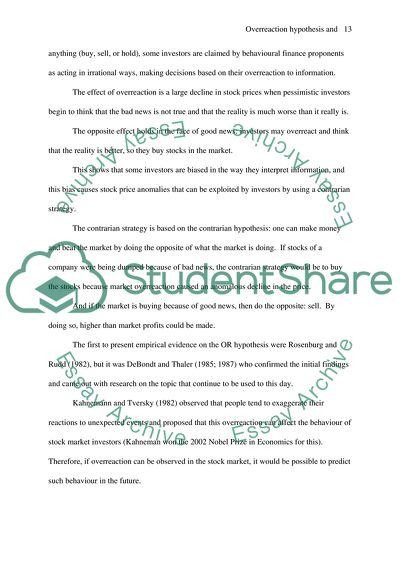Cite this document
(“Overreaction Hypothesis and Contrarian Strategy (the efficiency of Essay”, n.d.)
Overreaction Hypothesis and Contrarian Strategy (the efficiency of Essay. Retrieved from https://studentshare.org/marketing/1528882-overreaction-hypothesis-and-contrarian-strategy-the-efficiency-of-financial-markets
Overreaction Hypothesis and Contrarian Strategy (the efficiency of Essay. Retrieved from https://studentshare.org/marketing/1528882-overreaction-hypothesis-and-contrarian-strategy-the-efficiency-of-financial-markets
(Overreaction Hypothesis and Contrarian Strategy (the Efficiency of Essay)
Overreaction Hypothesis and Contrarian Strategy (the Efficiency of Essay. https://studentshare.org/marketing/1528882-overreaction-hypothesis-and-contrarian-strategy-the-efficiency-of-financial-markets.
Overreaction Hypothesis and Contrarian Strategy (the Efficiency of Essay. https://studentshare.org/marketing/1528882-overreaction-hypothesis-and-contrarian-strategy-the-efficiency-of-financial-markets.
“Overreaction Hypothesis and Contrarian Strategy (the Efficiency of Essay”, n.d. https://studentshare.org/marketing/1528882-overreaction-hypothesis-and-contrarian-strategy-the-efficiency-of-financial-markets.


